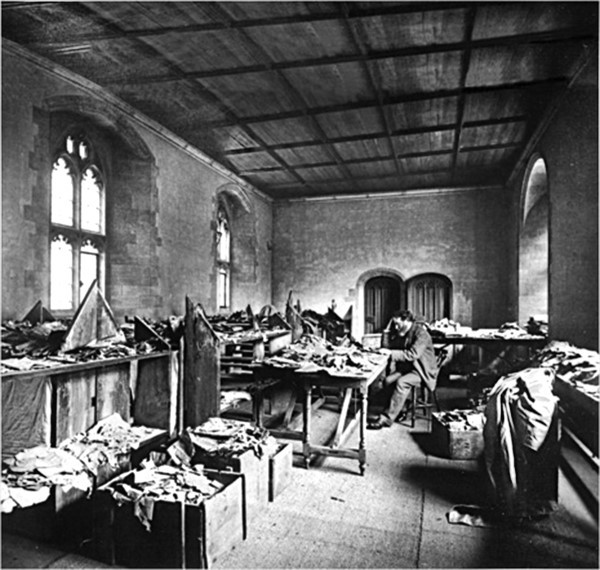The hidden treasures of the Middle East’s genizot
A genizah, Hebrew for “hiding place,” is a depository for sacred Hebrew books that are no longer usable. Since they cannot be thrown out because they contain God’s name, these documents, often called shemot or “names,” are put in a genizah. Genizot are usually found in the attic or basement of a synagogue, but can also be in walls or buried underground. Non-religious documents can be put there as well.
From the mid-1800s on, scraps of paper with writing in Hebrew, Latin, Greek, Aramaic and other languages have come out of the Middle East. They were sold to tourists and dealers, and some eventually made their way to England. There, Solomon Schechter, a professor of Talmudic and rabbinical literature at Cambridge University (and later head of the Jewish Theological Seminary in New York City), recognized some of these scraps as the original Hebrew “Book of Wisdom,” ascribed to Ben Sira. The “Book of Wisdom” became part of the Christian biblical canon (Ecclesiastes) when translated into Greek. Before its discovery in the Cairo Genizah, no known Hebrew version existed; some scholars even doubted its existence.
The place where these scraps, and larger pieces, were found was the Ben Ezra synagogue in Fustat (sometimes spelled Fostat) in Cairo. For over 1,000 years, the Jews of Cairo had deposited parchment with the name of God and, indeed, almost any other paper that had been written on, into their genizah; this was their recycling bin, which they did not empty.
Schechter led an expedition to Cairo, where, over several painstaking months, he extracted thousands of pages from the genizah and took them back to Cambridge. The sealed, dark room in the dry Egyptian climate allowed for the preservation of the documents. Eventually over 300,000 pieces of parchment were taken out. (More information is available in the book “Sacred Trash,” by Adina Hoffman and Peter Cole.)
For more than 100 years, scholars have been working cooperatively to translate and match various pieces of writings. More than 30 works by Rabbi Moses ben Maimon (Maimonides, or the Rambam, 1135-1204), the greatest medieval Jewish philosopher and physician, were discovered, including commentary on some Mishnah tractates and a number of letters. Before this discovery, only a few lines of original writings by the Rambam had ever been found.
Using computer technology, face recognition software and various forms of ultraviolet light and other imaging techniques, more and more pieces are being joined together.
Many cities have a genizah in a Jewish cemetery. Here in Rhode Island, some congregations have their own genizah, but we do not have a community one at any cemetery. In West Roxbury, Massachusetts, there is one run by the Jewish Cemetery Association. Their website states: “JCAM holds an annual Book Burial each spring at the King Solomon Memorial Park cemetery in West Roxbury. JCAM collects thousands of worn out siddurim (prayer books), Torah scrolls, tallitot, tzitzit, tefellin and other sacred materials containing the Hebrew name of God each year from the local communities, synagogues and organizations.”
You can find more information at JCAM’s website, https://www.jcam.org/Pages/Services/book_burials.htm.
RUTH BREINDEL is president of the Rhode Island Jewish Historical Association.








